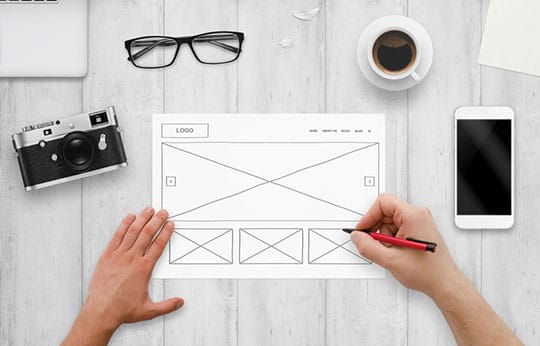The design has an expensive price tag associated with it. Just think about how much more expensive goods that have the word design tacked onto them are: designer clothes, designer handbags, designer shoes, and so on. There are entire spheres of luxury goods and premium services based around design and aesthetics such as cars or opulent, personally-tailored weddings; it’s an undeniable fact that good, high quality and impactful design usually costs big bucks.
Following that same logic, you’d suspect that any website with an amazing design has probably invested a copious amount of time and energy to create those designs. The possibility that attractive, cheap designs may be more popular and well-received than their expensive counterparts may not cross your mind at first, but it happens very often. But due to the popular and widespread nature of web designing as well as the accessibility of core coding languages like HTML and CSS, the cost of great web design has plummeted to only a few hundred dollars in recent years.

For many small business owners, keeping costs low and their business credit clean is very important. The problem is navigating through a sea of web designers and website building platforms to find ones that give you a balance between affordability and value. Here are a few key ways to structure your search approach, some key things to understand during negotiations, and to ensure the best commercial performance from your website.
Framing the Matter of Design
A key part of the supplier’s side of the web design market is keeping you ignorant of the options you have. Often times, the average person will not be able to tell the difference between a template you’ve ripped from Wix or a website that you’ve paid a web designer $5,000 to custom build for you. That’s the exact case in this comparison between these two wedding websites.
There’s so much information asymmetry in the web design space between the consumer and the marketer. So the first step to achieving fantastic design for cheap is to educate yourself on the basics of how websites are designed and the options that are available to you. There are a number of sites that have free templates available for you to use. And those look incredibly well-made and professional. A simple Google search will reveal a vast amount of templates that you can peruse and play around with.

Let’s say you want to pay some money to ensure that your website has a degree of uniqueness and some guaranteed standard of quality. Most hosting services like iPage or GoDaddy now offer you free tutorials on building templates as part of a subscription. Plus, you have a number of other popular options like Squarespace if you’re looking for a generic website template that possesses all the sleekness, simplicity, and modernity of most commercial pages that you’ve seen while browsing.
In this sense, building sites are like buying clothes. Check out these six designer t-shirts that are completely white but cost anywhere from $90 to $480. It’s not an exaggeration to say that you can get the same look for $15 at some off-brand store; the material probably won’t even be that uncomfortable. The same applies to websites because you can use templates and preset builds to achieve identical results to a website that you paid a designer top dollar to customize.
The critical point here is knowing that you have options outside of custom design when it comes to website building. You don’t even need to shell out hundreds of dollars to an individual or company to create you a website when there are services that do the same exact thing for much cheaper.
Know Your Way Around the Languages
But let’s say that you absolutely need someone to design a website for you. You’re against using templates or website builders with preset graphic options for whatever reason; maybe your business needs a more specialized function that is only available through custom design. At this point, you want to sharpen up your knowledge of the classic languages needed to build a site so that you can negotiate properly with website designers.

When you’re ignorant of the technical details behind the structure and the functions of a site, it’s easy for a website designer to try to pull the wool over your eyes and sell their services as something more sophisticated and complex than it actually is. In fact, you can simply spend a week looking at some basic lessons on HTML, CSS, and JavaScript from websites like Khan Academy, freeCodeCamp, or w3schools and you’ll be close to having a working understanding of how they are implemented in website design on a fundamental level. With that knowledge, you can demystify whatever technical aspects a web designer may try to overcharge you on. You can negotiate the price to something that’s fair and agreeable to both of you.
What Makes Design Amazing?
An amazing design consists of attracting customers and guiding them towards specific objectives that you want them to complete. This could involve subscribing to your newsletter, account creation, or make a purchase. These are called conversions, and an amazing site design should aim to optimize customer experience to maximize conversion rates. You or your web designer can spend hours coming up with something you think is great. But it doesn’t mean squat if you get zero visitors.

In many cases, performing an A/B test between two websites with different headlines, calls-to-action, or different graphical placement can help you determine the most successful features of website design as those aspects apply to your business. Harnessing the power of crowdsourced testing for the purpose of streamlining and testing out website designs will be a crucial step towards your business’ refinement of its design.





